The Tampa Bay Rays officially announced Tuesday that a historic agreement has been reached with the City of St. Petersburg and Pinellas County to move forward with a new state-of-the-art ballpark. Pictured, left, Jeff Hines, Hines Chairman & Co-CEO; Janet Long, Pinellas County Commission chair; Tampa Bay Rays Principal Owner Stuart Sternberg, Mayor Ken Welch; Brandi Gabbard, city council chair, Anddrikk Frazier, president and CEO, Best Source Consulting and Gwendolyn Reese, president of the African American Heritage Association and Hines consultant | Photo courtesy of the City of St. Petersburg.
BY RAVEN JOY SHONEL, Staff Writer
ST. PETERSBURG — The Tampa Bay Rays announced Tuesday that a historic agreement has been reached with the City of St. Petersburg and Pinellas County to move forward with a new state-of-the-art ballpark and a transformational development by the Hines Historic Gas Plant Partnership on the 86-acre site where the team’s current stadium sits.
“Today, we celebrate coming to terms on an agreement to make that plan a reality. Major League Baseball is here to stay, right here,” said Stuart Sternberg, principal owner of the Tampa Bay Rays.

‘Our transformational development of 86 acres in the heart of St. Petersburg will benefit St. Pete and Tampa Bay residents for generations to come,’ said Mayor Ken Welch. | Photo courtesy of the City of St. Petersburg.
The agreement advances a project for St. Petersburg, Pinellas County and the Tampa Bay region that will include nearly 8 million square feet of mixed-use development and a new neighborhood ballpark for the Rays that ensures Major League Baseball is here to stay in St. Petersburg for generations. Overall, this historic project will invest more than $6.5 billion in St. Petersburg over 20 years and be the largest mixed-use development project in Tampa Bay history.
“My story is a story of thousands who lived and worked and worshiped in this place, in this neighborhood,” said Mayor Ken Welch. “That community was promised a stake in the economic benefits that would come from the redevelopment of this land. And the agreement that we have forged with the Hines-Rays group will finally honor that promise.”
Welch speaks of the city’s promise to create “light industry” and affordable housing more than 40 years ago where the historically Black Gas Plant neighborhood sits, which turned into a baseball stadium for a team that did not yet exist.
Welch’s family had deep roots in the Gas Plant district, where young Ken worked in his grandfather’s (Flagmon Welch) woodyard on Fifth Avenue and 16th Street South. That’s where he learned the value of hard, honest work, and his grandparents’ house was a hub for family gatherings, daycare and afterschool care.
His grandparents’ house, the woodyard, and Prayer Tower Church of God in Christ, his uncle Clarence Welch’s church on 14th Street, were all razed in the name of progress. The school board purchased his grandparents’ home to expand Sixteenth Street Middle School (now John Hopkins Middle School, which never materialized.
The woodyard sat precisely where the interstate I-175 came barreling through, and the church, like so many other buildings, was swept aside in the name of progress.
The neighborhood was home to many people who still have pleasant memories of growing up there. The communal fish fries on Friday, crab boils on Saturday and barbecues were a significant part of the neighborhood’s social life, as was the sound of children’s laughter as they played kickball, hopscotch, and four-square in the alleys and backyards of the homes along Sugar Hill, Dixie and Dunmore Avenues.
Mango, avocado, guava, and other fruit trees abounded alongside sugarcane in the front and backyards of the homes in the neighborhood. Local historian and president of the African American Heritage Association, Gwendolyn Reese, said she has particularly fond memories of the cherry bush hedges along one side of Dr. James and Fannie Ayer Ponder’s home on Fifth Avenue South, or Sugar Hill, as so many people remember it.
The Gas Plant neighborhood was a bustling community where many Black residents worked, lived, played, and died. It was the home of the first school for Black children, Davis Academy, later named Davis Elementary, which opened in 1910.
Bordered to the west by the gas tanks and to the east by Webb’s City, the Gas Plant neighborhood was home to several Black churches, businesses, and homes. Also, the Harlem Theater and the James Weldon Johnson Branch Library were a part of the neighborhood, and Campbell Park was nearby.
This vibrant, flourishing, mixed-income neighborhood was devastated first by the interstate and then completely gutted with the construction of the baseball stadium now known as Tropicana Field. But baseball was not what was originally promised to the neighborhood residents.
Destruction of a Black community timeline
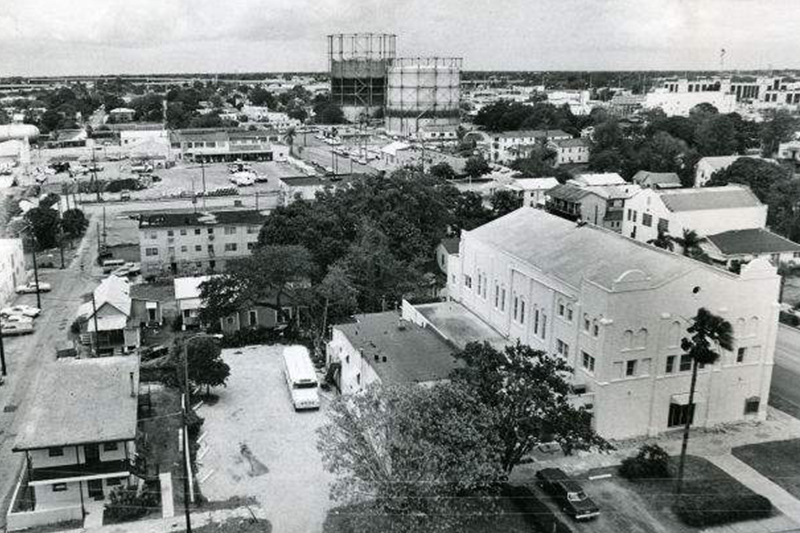
The Gas Plant neighborhood was filled with homes, churches, businesses, a library, a theater, schools, and playgrounds. It was a thriving community with a rich history.
On Sept. 7, 1978, the city council passed a resolution declaring the neighborhood a redevelopment area. They adopted a written proposal that included affordable housing and an industrial park that would create between 620 and 688 new jobs.
According to an article in the St. Petersburg Times written by Theresa White on April 19, 1979, the Module 16 Advisory Committee and the International Ministerial Alliance (IMA) opposed the plan because it would displace more than 800 Black residents.
The NAACP, several churches and residents had already voiced their opposition. The primary criticism of the plan was that it was designed without asking the people most affected for their opinions. Residents were not consulted until the plans had been drawn up.
According to the news article, for the city to keep its promise of developing an industrial park and affordable housing, it would have “to acquire 185 parcels of land; demolish 262 structures; relocate 27 small businesses, 45 owner-occupants, and 281 tenant households.”
Elder Clarence Welch of Prayer Tower Church of God in Christ said his church was prepared to fight to keep their newly renovated church from being demolished. Many voiced that they feared they couldn’t afford to live elsewhere. But the concerns went unheeded.
In November 1982, the IMA held a press conference in which they endorsed the Gas Plant area as the future home for the proposed baseball stadium.
The wheels were put into motion, and the race was on between Tampa and St. Petersburg, for which city would be the first to build a stadium and attract a Major League Baseball team to the Bay area. In March 1983, Mark Johnson, a staff writer with the Times wrote: “The Pinellas Sports Authority selected the Gas Plant area in St. Petersburg as the site for its stadium and even held a symbolic ground-breaking ceremony.”
This was before a franchise had been awarded.
In 1984, the two gas cylinders, which served as neighborhood landmarks for so many years, were dismantled. This was the beginning of the end for the Gas Plant neighborhood.
In July 1986, three years after the symbolic groundbreaking and eight years after the referendum of 1978, six of the nine city council members voted to build the stadium on the site without allowing it to go to referendum.
In 1986, City Manager Robert Obering supported the plan. Mayor Edward Cole, Jr. and Councilmembers Bill Griswold and Dean Staples voted against the stadium. Councilmembers Martha Maddux, J.W. Cate Jr., Robert Stewart, Chuck Fisher, David Welch, and Bill Bond Jr. voted to build the stadium.
In June 2008, Robert Stewart, a city council member in 1986, was quoted in the Times saying, “He believed voters would not have approved the stadium in 1986 when the initial cost was $85 million. But he had no regrets about voting for it.”
In 1988, the city acquired Laurel Park, a low-income housing complex from the Housing Authority, to build a parking lot for the stadium. Once again, Black families were moved from their homes and dispersed throughout the community, often losing the support systems and safety nets that were integral to the health and well-being of families.
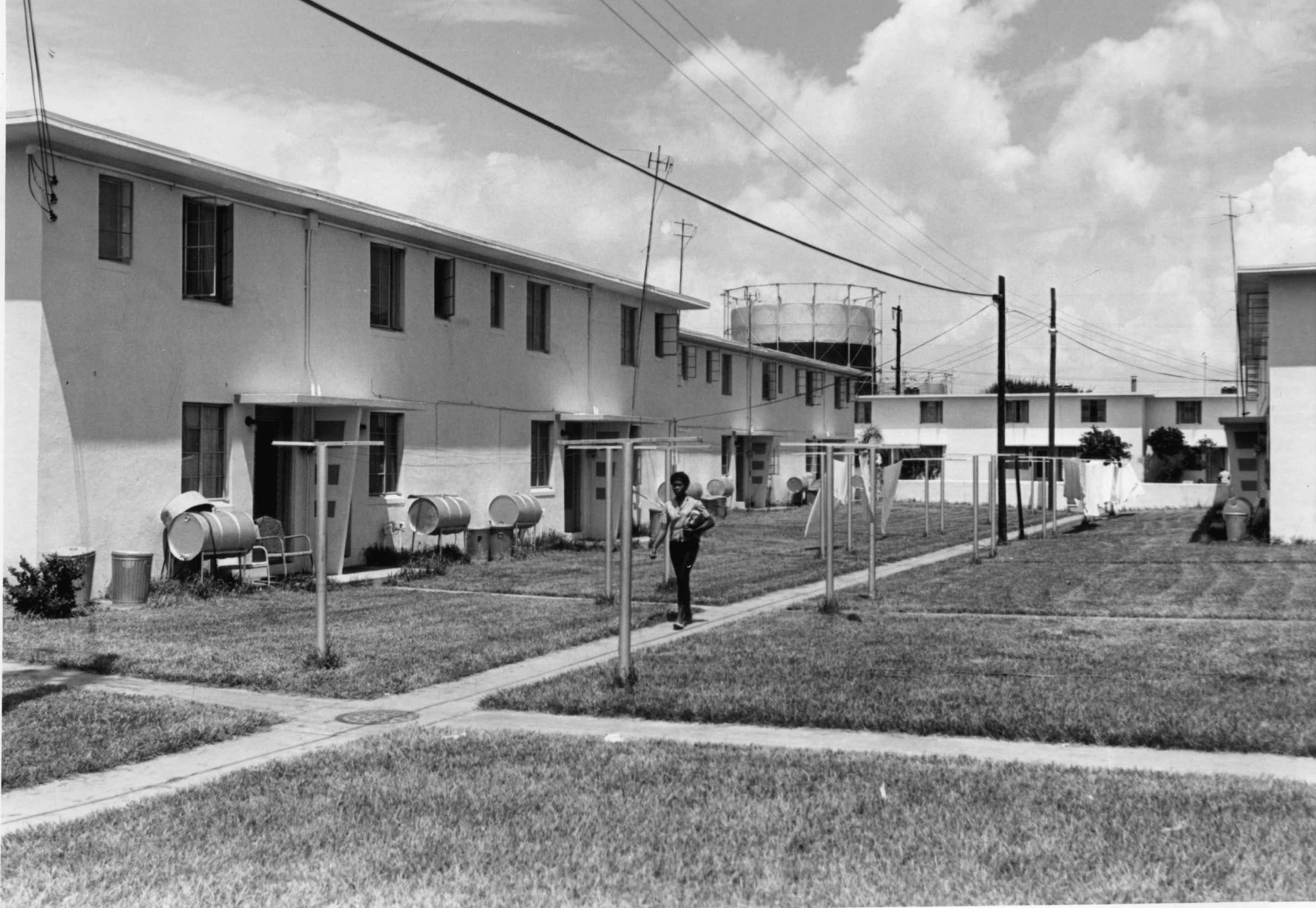
Although living conditions in the complex had deteriorated by the time the city broke ground for Tropicana Field in 1988, the impact of Laurel Park’s demolition was socially and economically devasting. | Photo courtesy of Tampa Bay Times
In 1987, construction began. The stadium would be built but without a baseball team. It would be eight years before a baseball franchise was awarded to the city. Until then, various events were held in what was originally the Florida Suncoast Dome, including music concerts, ice skating shows, home and garden shows, the St. Petersburg International Folk Fair, basketball’s NCAA Final Four in 1999, and any special event that would reduce the Dome’s deficit.
In 1993, the Tampa Bay Lightning hockey team agreed to play in the Dome for two years, and the name was changed to the ThunderDome. In 1996, the ThunderDome became Tropicana Field. About 400 events were held at the Dome from when it opened in March 1990 to when it reopened in January 1998.
In March 1998, 20 years after the city council passed a resolution declaring the Gas Plant neighborhood a redevelopment area and promised a plan that included affordable housing and an industrial park, the Devil Rays played their first official game at Tropicana Field. This was the symbolic conclusion of a 20-year project that tore apart the heart of St. Petersburg’s Black community.
And now, 25 years after the first game was played in the stadium in 1998, 34 years after construction began on the stadium in 1987, 35 years after six of the nine members of the council voted to build the stadium on the site without allowing it to go to referendum in 1986; 37 years after the two landmark gas cylinders were dismantled in 1984; 43 years after the city council passed a resolution in 1978 declaring the neighborhood a redevelopment area and promised, in writing, a plan that included affordable housing and an industrial park offering between 620 and 688 new jobs; and approximately 130 years after the neighborhood was formed, the city will finally live up to its promise to the Black community.
What the current agreement looks like today
The agreed-upon plan includes the key aspects of the original proposal submitted by the Hines Historic Gas Plant Partnership in response to Welch’s Request for Proposals in 2022. The agreement increases the number of affordable/workforce housing units to be built by the partnership to 1,200, with at least half of that amount to be built on the Historic Gas Plant site. It also adds on-site affordable units for seniors.
The development agreement focuses heavily on the equitable, intentional, and restorative delivery of community benefits and economic impacts, specifically to honor the legacy of the Historic Gas Plant neighborhood’s residents and businesses.
This includes a $50 million commitment to intentional equity initiatives in partnership with south St. Petersburg, including affordable housing funding, employment and business support, education programs and Minority/Women-Owned Business Enterprises hiring commitments.
Hines is one of the world’s largest privately held real estate developers and managers, with extensive experience in Florida and nationally. Once fully built, the project is planned to include:
- 4,800 residential units
- 1,200 affordable/workforce residential units (on and off-site)
- 600 senior living units
- 1,400,000 square feet of office, medical and commercial space
- 750,000 square feet of retail
- 750 hotel rooms
- 100,000 square feet of entertainment space, including a concert venue to seat up to 4,000
- 50,000 square feet of civic space, namely a new home for the Woodson African American Museum of Florida
- 90,000 – 100,000 square feet of conference, ballroom and meeting space
- 14 acres of public open space
- 14,000 parking spaces
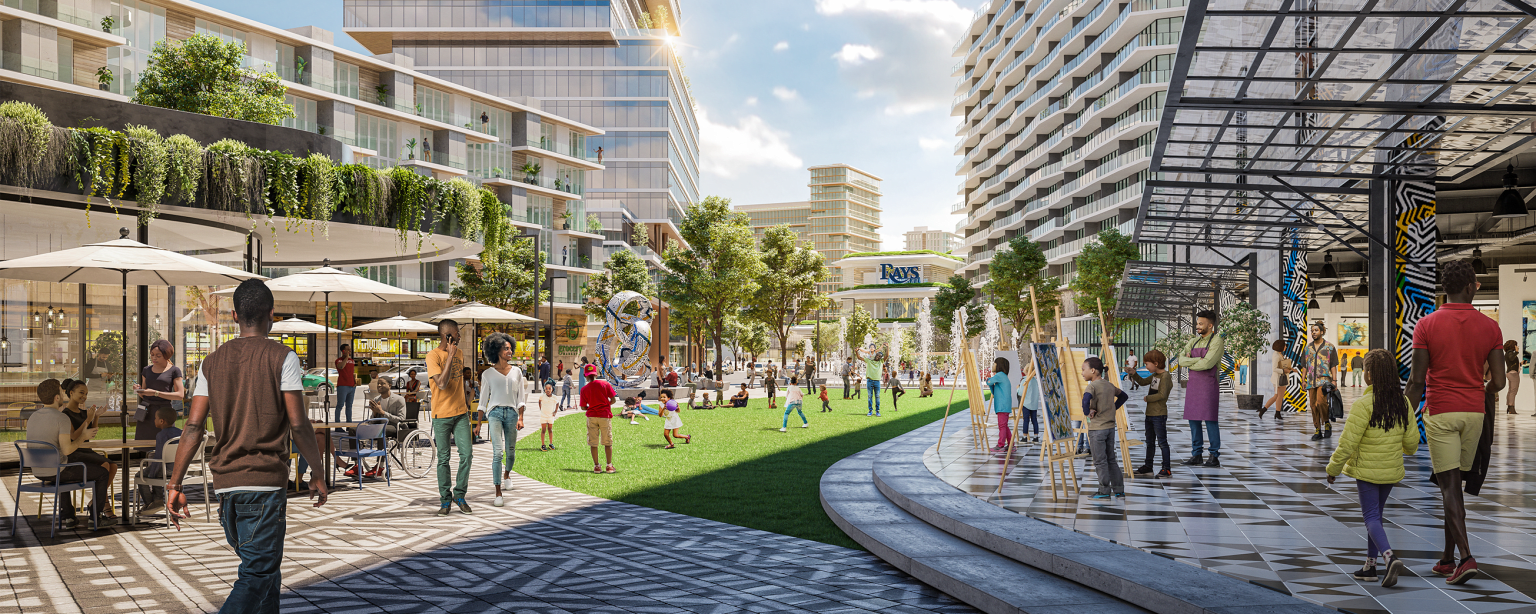
A rendering of the Rays’ development project for the Historic Gas Plant District. | Courtesy of Tampa Bay Rays
The ballpark will have a capacity of around 30,000 for baseball, with the ability to accommodate up to 35,000 for other events, providing the most intimate fan experience in Major League Baseball. The Rays will pay more than half of the $1.3 billion ballpark and be responsible for any cost overruns. Pinellas County and the City of St. Petersburg will combine to contribute approximately $600 million in equal amounts.
Tampa native Anddrikk Frazier, president and CEO, Best Source Consulting, was brought in to ensure that the community had a voice in the project.
Frazier said the Hines historic Gas Plant partnership of a $50 million investment in intentional equity to south St. Pete and the commitment of at least $500 million in supplier diversity spent will ensure the redevelopment of the historic Gas Plant district focuses on:
- Sustainable processes that will create a talent pipeline from early childhood education through workforce alignment and employment
- High quality affordable residential rental and affordable homeownership opportunities
- Successful entrepreneurship creation through small business generation and growth
“This will be direct investments into current community infrastructures of south St. Pete, such as the Enoch Davis Center, new programs that focus on supporting business incubation, ownership and workforce placement for minority, small and women-owned businesses throughout organizations such as the Tampa Bay Black Investment Corporation, Pinellas Technical College and One Community,” Frazier said.
Also, the affordable housing ownership model is in partnership within these sites at the City of St. Pete, Boley Centers and the Pinellas County Urban League. Frazier also mentioned the investment in preserving the rich Black legacy of the city through funding and placement of the Woodson African American Museum of Florida.
He also tackled the issue of “brain drain” in the community. Human capital flight has long been a struggle in the St. Pete Black community. Fraizer reached out to native son Will Packer, a highly successful Hollywood producer and director, to ask why it is so difficult for St. Pete to retain its talented youth.
Packer feels the lack of opportunity and a need to create an environment where all the forward-thinking artists, entrepreneurs, and visionaries want to be.
“Twenty years from now, we should evaluate the success of this project not solely on how many championships the Rays have won or how many Fortune 500 companies have called the historic Gas Plant home, but on how many kids from Campbell Park and Melrose Elementary are business owners, tenants, and residents of the historic Gas Plant district,” asserted Fraizer.
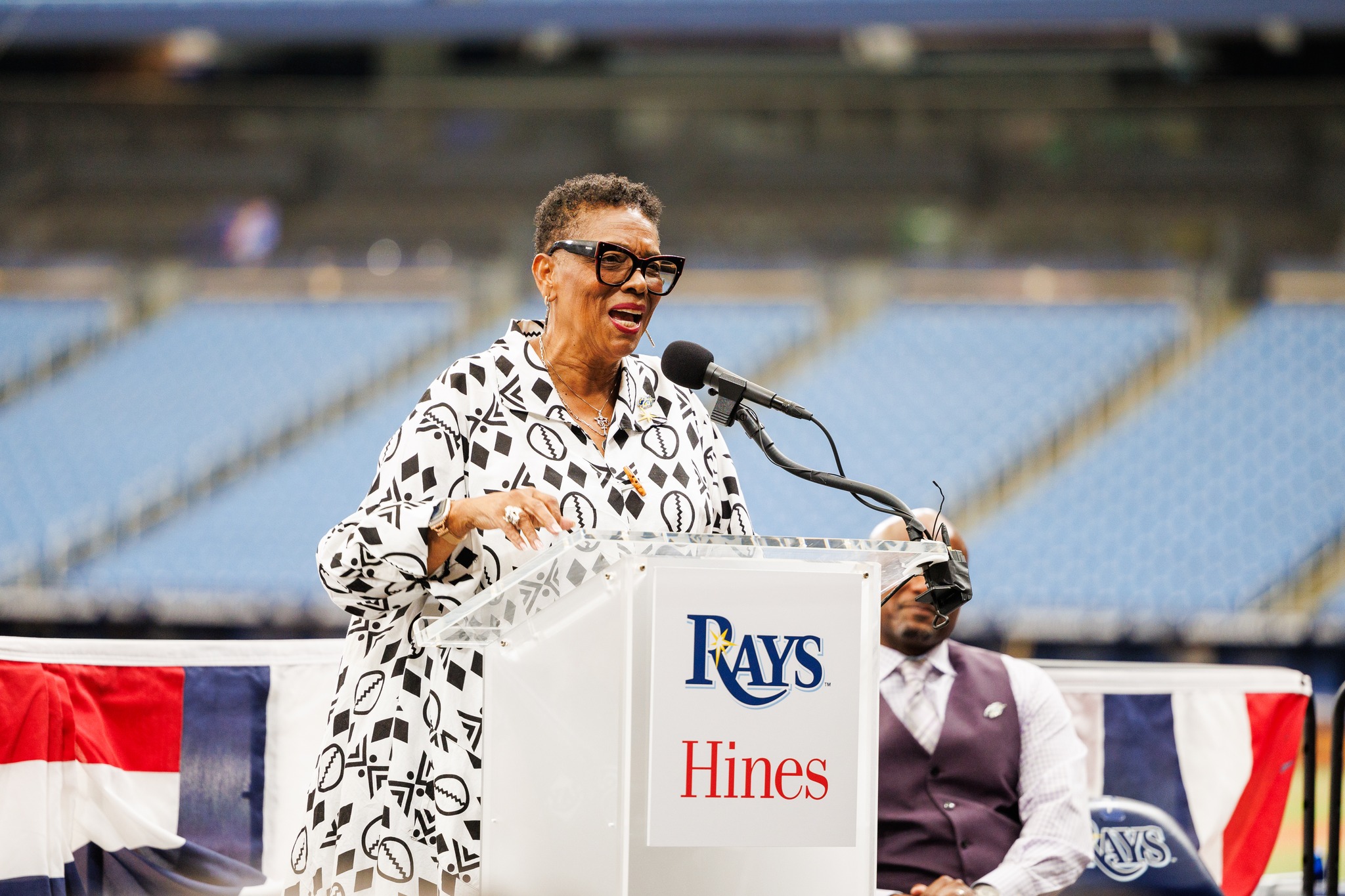
‘I can assure you that our commitment to the Gas Plant residents and to the City of St. Pete is one that I stand strongly in, I believe in, and I know that we will accomplish what we set out to do.’ | Photo courtesy of the City of St. Petersburg.
Reese, like Frazier, was also brought in to ensure that the community had a voice in the project. As she looked out into the crowd, she began to mention the names of former residents of the Gas Plant neighborhood who were present, such as Wanda Stuart, Andy Walker, Ruben Mays, Paul Stewart and Dr. Basha Jordan, Jr., the grandson of the Elder Jordan.
“His grandfather — this land that we are standing on — the City of St. Petersburg purchased this land from his grandfather to erect the Gas Plant. You talk about history coming back around,” exclaimed Reese. “We are all proud residents of the Gas Plant neighborhood, and this is a wonderful day for us.”
Reese said everyone talks about the 40 years the Black community has been waiting for promises to be kept, “well, we’re waiting no longer!”
She said the Hines team will continue to reach out to the community to discuss plans and get input.
Construction on the transformational development is expected to begin in late 2024 in the first of two phases. The team will continue to play in the existing ballpark on the site until the end of its current lease with the City of St. Petersburg in 2027. Phase 1 of the development and the new ballpark are projected to be ready by Opening Day 2028.
The public approval process by Pinellas County and the City of St. Petersburg is expected to begin this fall.

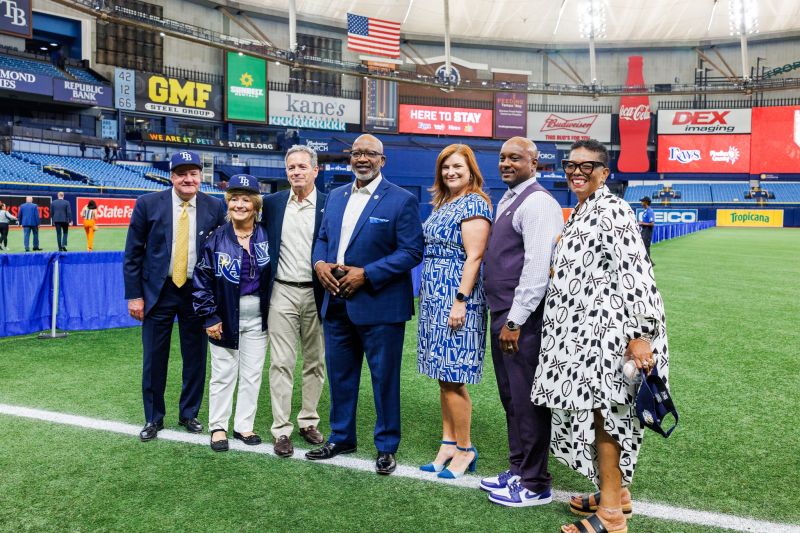
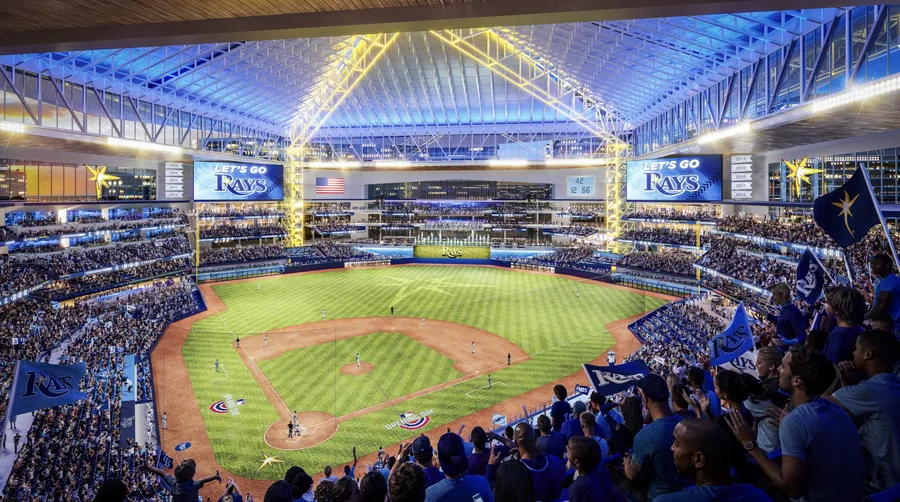
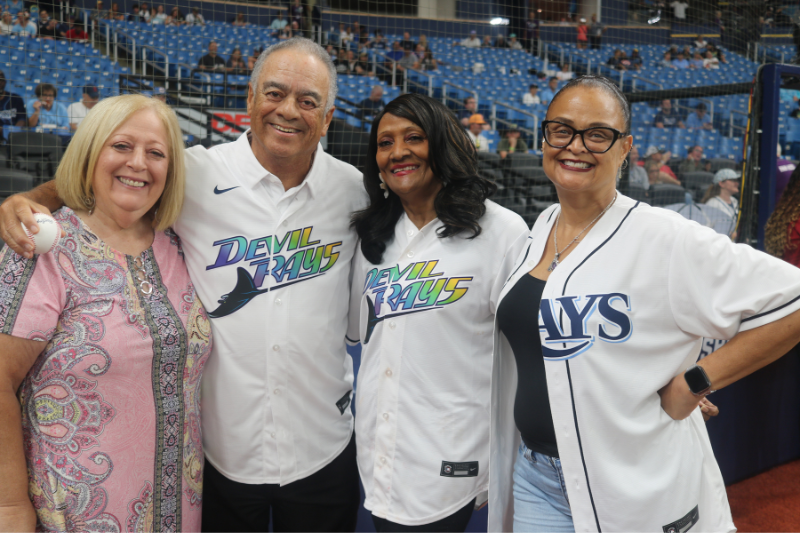
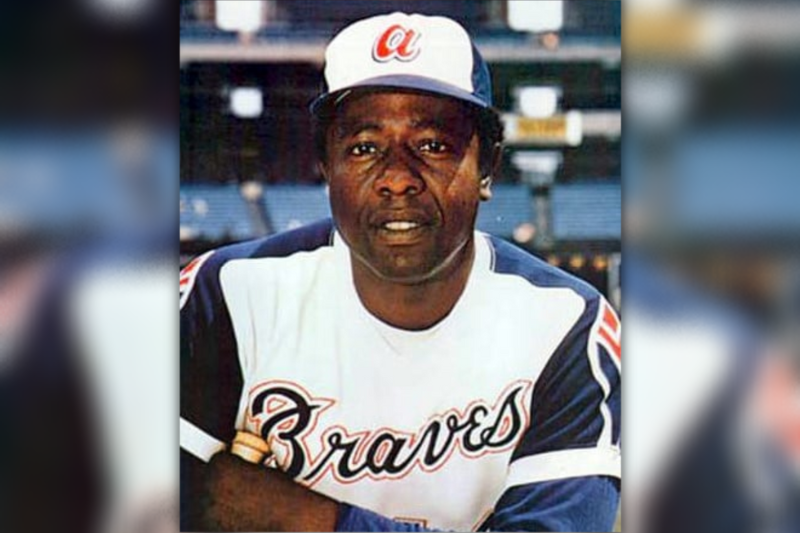

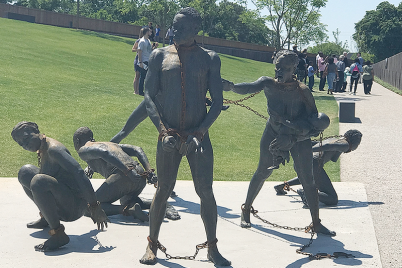
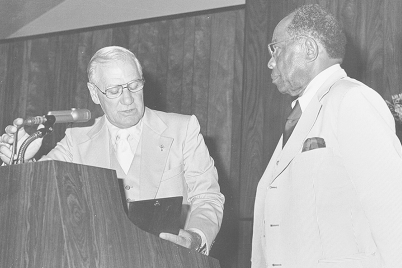
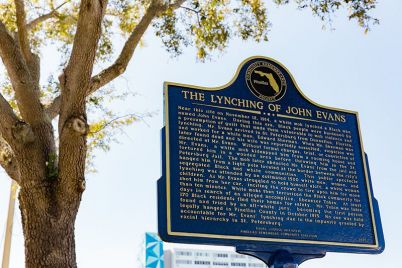





Outstanding Leadership!!! This multi billion dollar project is life changing, tilting the entire economic ecosystem of St Petersburg. Many people will work AND become wealthy as a result. The Black middle class will grow and thrive in the next decade because of this major investment. Congratulations St. Petersburg! We hit a home run ( no pun intended). Peace.